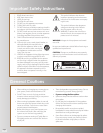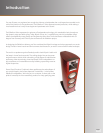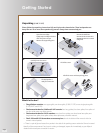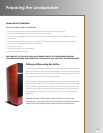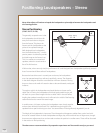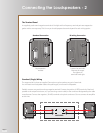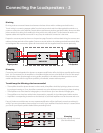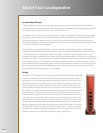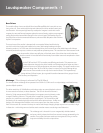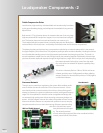
Page 9
Cables, Crossovers and Connections
For best results, connect your loudspeakers with purpose-designed loudspeaker
cable. The cables to both loudspeakers should be of equal lengths and be of a
gauge sucient to drive the speakers comfortably without any loss of power in the
bass at high volumes.
We recommend a minimum wire diameter of 14 AWG. If you are in any doubt,
you should connect the loudspeakers before you connect the amplier. If you are
replacing a existing pair of loudspeakers, we suggest you de-wire the amplier rst.
There are two crossover networks in the P-38F, P-37F, P-17B and P-27C. One panel
is a dedicated bass network. The second panel is a network for the midrange and
treble units . The networks terminate in a custom designed bi-wire terminal panel located on the lower back
panel of the loudspeaker. As the low and high frequency elements can be separately connected, two types of
wiring are possible: standard wiring and bi-wiring.
The terminal panel accepts a wide variety of connectors, including spade lugs, pins or bare
wire. If you have no preference, your dealer can advise you as to appropriate connectors.
The instructions in this user guide relate to bare wire. If you use alternative connectors,
consult your dealer or the hardware supplier’s literature.
Standard loudspeaker cable is comprised of two conductors ,with one core having a ridge
or stripe. We suggest you connect the striped conductor to the Positive (RED) terminal in all
cases. This will ensure that the loudspeakers are properly connected and in phase.
Split the cable to a depth of 1½”. Strip ½” of insulation. If the wire is stranded, lightly twist
the ends together to ensure no stray ends of cable can short adjacent terminals.
ConnectingaTerminal
Partially unscrew the terminal.
1: In the base of the terminal there is a hole. Insert the bare end of the wire into
the hole.
2: Tighten each connector hand tight. After connecting all the terminals, check
that there are no stray strands of bare wire that can reach across and short out
adjacent terminals.
3: When you are sure that all the connections are correct, insert the Allen key into
the socket in each terminal head and tighten fully to secure them. DO NOT
over-tighten the terminals, or you may damage them. (An Allen key (hex
wrench) is provided in the accessories carton).




